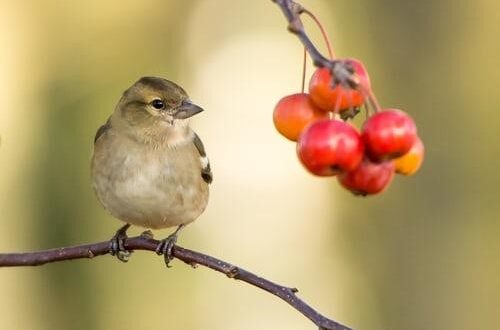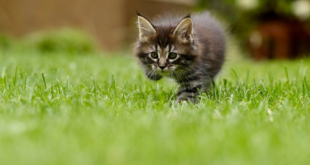One of the most rewarding aspects of growing your own fruit and vegetables is being able to harvest it at the end of the season, and serve up some wonderful dishes using your own produce. Unfortunately, there are some common garden pests that have other ideas!
Whether you’ve got a garden in the country, an allotment in the city or a smallholding there’s no getting away from the fact that you will encounter unwanted visitors to your plot. To help make sure you’re getting the most from your efforts, and not those pesky pests, we’ve put together a short list of the most effective garden pest control ideas for a range of species.
Birds
Gardeners that grow fruit will be particularly aware that birds can be a huge problem in the garden. Cherry and berry trees and bushes are usually the main targets for birds and many gardeners find these difficult to protect.
One very common solution for protecting trees is to use a small mesh bird netting, which stops birds gaining access to the tree. Garden netting is fairly cheap to buy and can simply be draped over the bush or tree. To keep it secure it’s best to peg or weigh it down at ground level.
When installing bird netting you must make sure that there are no birds present that could be trapped. Also, if there are nests in the tree you should not disturb them and find another solution. Alternatively you could contact a professional pest controller to get expert advice.
For smaller bushes and plants a very popular pest control idea is to install a fruit cage. Walk-in fruit cages are best suited to taller plants and trees as they are around 2m tall and come with a door for easy access. Smaller low cages are perfect for fruit and vegetables that grow low to the ground but spread, like pumpkins and rhubarb.
Slugs & Snails
You may have heard that one of the most effective ways to protect your garden from slugs and snails is to use crushed egg shells. Although some still swear by this solution, this post by slughelp.com concludes that they have little to no effect.
So, what is the best way to protect your garden against slugs and snails? One recommendation is to use copper bands. The great thing about copper bands is that they don’t harm the slugs and snails in any way so are completely humane.
The way that copper slug bands work is by producing a harmless eclectic-shock type reaction when the slugs make contact with them. Not wanting to crawl over the band, the slugs and snails simply turn around and go back the way they came.
A common mis-use of these bands is to lay them flat on the ground. The correct way to install them is to create a ring and push the bands into the soil around the base of each plant that you want to protect. Adding this height provides an extra degree of protection.
Butterflies & Other Insects
Much like protecting against birds, butterflies and other insects can easily be controlled by using specific types of netting. The main difference between birds and insects is that insects tend to cause damage to a wider range of plants, fruit and vegetables than birds do so the protection needs to be a little more robust.
To protect against butterflies (and eventually caterpillars) you can purchase specialist butterfly netting. Butterfly netting has a small mesh size or 10mm or less and is made from thin plastic type material. It can also be an effective solution for protecting against small birds.
Protecting against insects again requires a specialist type of netting. A fine mesh insect net has a mesh size of around 1.3mm and will protect against larger insects like carrot flies. An ultra-fine insect net has an even smaller mesh size of 0.8mm and is suitable for use against carrot root flies, cabbage butterfly, onion fly, flea beetle white fly and trips.
One advantage to using netting like this is that it is light enough to drape over plants without causing any damage. It also lets through plenty of light, air and moisture so growth is not inhibited.
Moles, Small Mammals & Deers
Moles and other mammals are typically best dealt with by installing some kind of perimeter around your garden. If you want to keep them out completely then any kind of fence or netting should be dug into the ground. This will stop moles, rabbits, rats and mice from burrowing underneath. It’s also important to install netting or fencing for the smallest pest you are trying to protect against.
Moles in particular can be a real pain, especially if you have a large area of lawn that is prone to mole hills. Contrary to popular belief, mole hills are usually created by just one mole as they are highly territorial which makes dealing with them a little easier.
If you cannot tolerate mole activity then humane methods of management should be put in place. This can include use of mole netting, which needs to be laid under the turf, and electronic devices that produce a buzzing noise, much like a cat deterrent.
Another method is mole-repellent smoke. The fumes emitted deter worms and other food that moles like to eat from entering the mole tunnels. With no food to eat the moles will simply move onto another location (hopefully away from your garden). The RSPCA has a great PDF to help you consider your options.
Keeping Your Garden Safe
Whatever pest you are trying to protect against, take comfort in knowing that there is a solution out there. We always advocate the use of humane methods of garden pest control and for you to consider the impact of the ecosystem as a whole. Removing some pests can cause a lack of food for other animals that you might enjoy having in your garden so always approach with care.
 Gardeners Club The Gardeners Club is a free to join online club for everyone with an interest in gardening and gardens.
Gardeners Club The Gardeners Club is a free to join online club for everyone with an interest in gardening and gardens.






